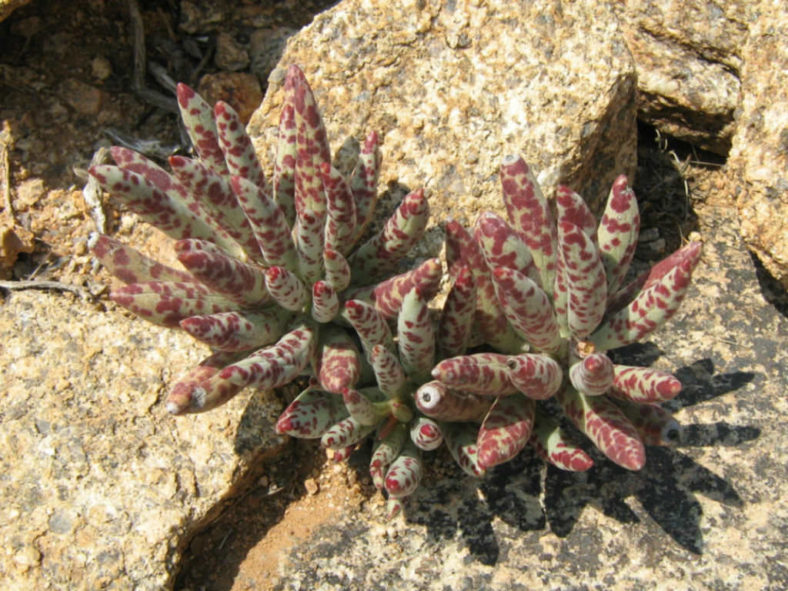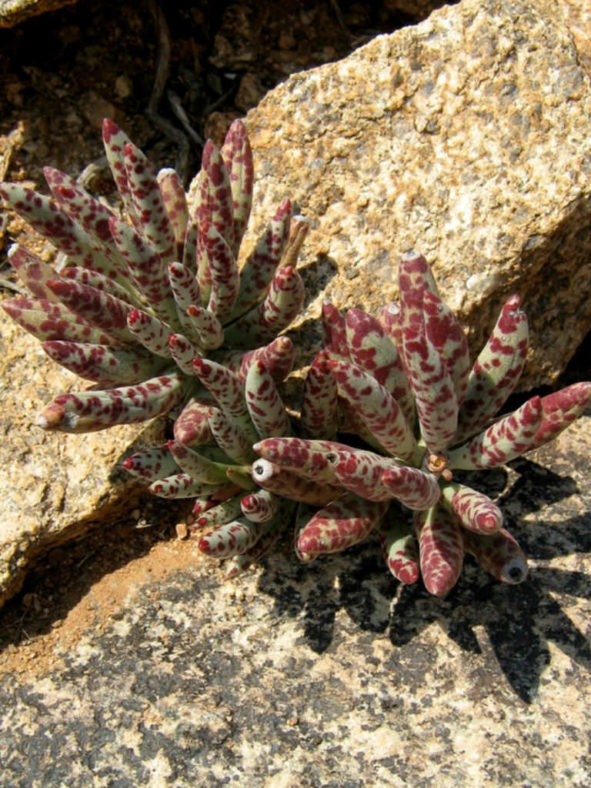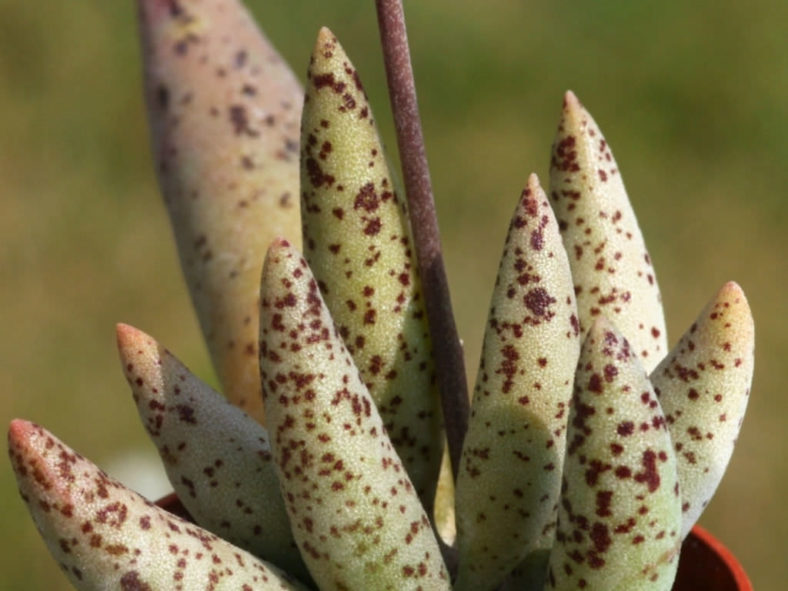Scientific Name
Adromischus filicaulis (Eckl. & Zeyh.) C.A.Sm.
Synonym(s)
Adromischus fragilis, Adromischus mammillaris var. filicaulis, Cotyledon filicaulis
Scientific Classification
Family: Crassulaceae
Subfamily: Kalanchoideae
Genus: Adromischus
Etymology
The specific epithet "filicaulis" (pronounced "fil-ee-KAW-liss") means "having thread-like stems" and probably refers to the long, slender flower stalks of this species.
Origin
Adromischus filicaulis is native to Namibia and South Africa. It grows on stony slopes or loamy flats under bushes from Rosh Pinah in southern Namibia to Willowmore, Beaufort West, and south of the Great Karoo in the Western Cape.
Description
Adromischus filicaulis is a sparingly branched succulent with short branches and grey-green leaves, usually with red to purple spots. It slowly grows and can reach a height of up to 6 inches (15 cm). The stems are thick, fleshy, grey-brown, and can grow up to 14 inches (35 cm) long and 0.5 inches (1.3 cm) in diameter. They are erect or decumbent and rarely have stilt adventitious roots. The leaves are linear-elliptic, measuring up to 3.2 inches (8 cm) in length and 0.6 inches (1.5 cm) in diameter.
The flowers can reach a length of 0.5 inches (1.3 cm) and appear in mid-summer on slender stalks that can grow up to 14 inches (35 cm) tall. The corolla tube is yellowish-green and red-tinged towards the hairless throat. The petals are white or tinged pink and broadly triangular.

Subspecies of Adromischus filicaulis
- Adromischus filicaulis subsp. filicaulis
- Adromischus filicaulis subsp. marlothii
How to Grow and Care for Adromischus filicaulis
Hardiness: USDA hardiness zones 10a to 11b: from 30°F (-1.1°C) to 50°F (10°C).
Many species are easy to grow in any free-draining, gritty compost. Their compact habit allows a collection to be maintained in a small space, and they grow well on any sunny window ledge or the top shelf of the greenhouse. Water mostly from spring to fall; let them dry out between waterings. Adromischus tolerates cool, frost-free conditions during the winter if kept dry. It is also important to keep water off the foliage during the winter. Mealybugs and vine weevils can be discouraged with a systemic insecticide.
Adromischus can be propagated from a single leaf, which should be placed against the side of the pot so that the stem ends touch the compost. Some species drop their leaves easily, and although each leaf will form a new plant, growing a large specimen can be challenging. In other cases, leaves for propagation must be carefully detached with a sharp knife.
See more at How to Grow and Care for Adromischus.
Links
- Back to genus Adromischus
- Succupedia: Browse succulents by Scientific Name, Common Name, Genus, Family, USDA Hardiness Zone, Origin, or cacti by Genus
Photo Gallery
Click on a photo to see a larger version.

